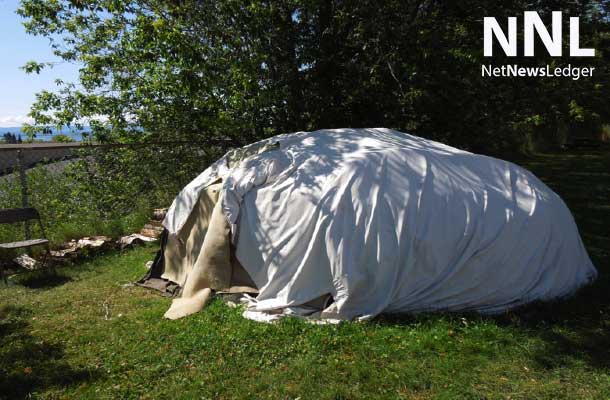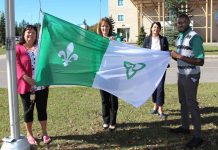

Thunder Bay Regional Aboriginal Engagement Gains Results
THUNDER BAY – HEALTH – A key strategic priority of Thunder Bay Regional Health Sciences Centre (TBRHSC) in Aboriginal Health is to establish an environment that is culturally sensitive and welcoming to patients and families.
Some patients at TBRHSC request to participate in a sweat lodge ceremony as part of their healing journey. A sweat lodge is a dome-shaped structure made of red willow, ash, birch, maple or jack pine saplings, covered with canvas tarps or blankets. Inside the sweat lodge, participants sit in a circle around the central fire pit. The purpose of participating in a sweat lodge varies from purification and cleansing to healing.
Leaders at TBRHSC and members of its Aboriginal Advisory Committee wanted to seek feedback from the wider Aboriginal community to determine whether or not a sweat lodge should be constructed on TBRHSC grounds for the use of patients and families, as well as staff and volunteers.
Community Engagement sessions were held in March 2014 at the Thunder Bay Indian Friendship Centre, Métis Nation of Ontario, Wequedong Lodge, Dennis Franklin Cromarty School, Ontario Native Womens’ Association, and Ka Na Chi Hih (Treatment Centre). In total, 112 participants, including patients, youth, adults and elders, were consulted. Individuals represented the Treaty #3, Treaty # 9 and the Robinson-Superior communities.
Participants were asked whether they would access a sweat lodge if it was available to them on-site at TBRHSC. As a result, 79% of participants said they would not access a sweat lodge on-site. A number of reasons were given including: not believing in the practice or not familiar with it; or, it depends who is conducting the sweat.
The results of the engagement sessions were presented to the Aboriginal Advisory Committee which endorsed recommendations to have TBRHSC’s Aboriginal Engagement Lead collaborate with the community agencies to provide access to one or more sweat lodges upon request from patients and families at TBRHSC and to develop a process, involving Spiritual Care, and a communication plan. TBRHSC will also continue to work with other agencies to enable access to community sweat lodges by patients and families.
Participants were also asked whether they would eat traditional foods in the TBRHSC cafeteria or at the bedside. Of those asked, 57% said they would not eat traditional foods if it were made available.
Of those who indicated that they would consume traditional foods, approximately 80% indicated that they prefer fish, wild rice and bannock.
Based on this feedback, it was recommended that TBRHSC provide access to fish, bannock, wild rice and regional fruit when in season and continue to offer traditional foods at special events such as National Aboriginal Day each June.“I am thankful to the volunteer members of our Aboriginal Advisory Committee and all those who made time to attend and participate in these engagement sessions,” said Carmen Blais, Aboriginal Engagement Lead. “Their feedback is invaluable as we work to improve the experience of our Aboriginal patients and families.”










